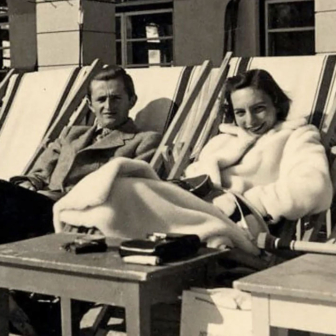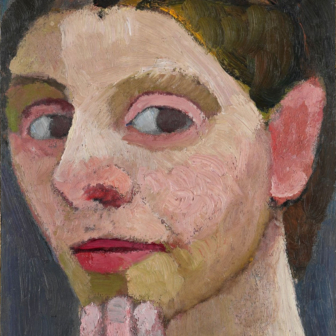Too Close to Ignore: Australia’s Borderland with Papua New Guinea and Indonesia
Edited by Mark Moran and Jodie Curth-Bibb | Melbourne University Press | $34.99 | 293 pages
The Road: Uprising in West Papua
By John Martinkus | Black Inc. | $24.99 | 114 pages
On a broadscale map, Australia looks safely separated by ocean from the rest of the world. The “air–sea gap,” in the jargon of strategists, provides a broad moat against attack, and space for the likes of Scott Morrison and Peter Dutton to mop up smaller intrusions — “on-water matters,” nothing to see here — before they arrive on Australia’s shores.
In finer grain, though, there is a flaw in this comforting picture. On the surface of what used to be an Ice Age land bridge are a string of Australian islands extending to less than five kilometres from the coast of Papua New Guinea, or a fifteen-minute journey in the outboard dinghies used by locals.
The Torres Strait Islands were annexed by Queensland in the 1870s just as European powers were starting to carve up the huge and largely unexplored island of New Guinea itself. The fears in Brisbane were soon allayed by the British–German decision to divide the eastern half, with the southern portion of that half becoming a British protectorate.
Queensland resisted proposals to move the border with British Papua to a more central line in the strait, and as late as 1972, under premier Joh Bjelke-Petersen, it maintained that attitude when Canberra was trying to fix the border ahead of Papua New Guinea’s independence in 1975. In that instance at least, the premier could say he was heeding the voices of Indigenous people. The villagers of the three islands just off the Papuan coast — Boigu, Dauan and Saibai — wanted to remain Australian citizens.
Too Close to Ignore explores the hybrid border that resulted, and looks at what has become of the peoples on either side. This collection of essays is the result of extensive on-the-ground research, and adds up to a fact-laden dossier that points to potential new dangers and offers suggestions for easing the tensions that create opportunities for malign forces.
As several of the book’s contributors point out, the widening gap in living standards is putting the arrangement under pressure. As contributor Peter Chaudhry observes, “There are few places in the world where such stark inequality exists between two places that are so close.”
Since 1975, the Torres Strait Islanders have been part of Australia’s welfare advances, getting Centrelink payments and access to financial services, world-class hospitals and schooling. Onshore in PNG, the inhabitants of fourteen recognised “treaty villages” can travel to the three nearby islands to engage in “traditional practices.” Largely, however, they and the other people of what is known as the South Fly region must rely on a collapsed PNG administration while coping with estuarine fisheries blighted by silt from the giant Ok Tedi mine far up the Fly River.
Local health clinics are either derelict or without medicines and instruments, primary school teachers are often absent, roads are few and mobile telephone coverage spotty, and fuel for outboard motors is three times the Australian price. The only hospital, secondary school and ATMs are on Daru Island, in the main town where some 16,500 people live mostly in crowded squatter settlements without much clean water and sanitation.
“Daru is an ideal environment for the diseases of poverty to flourish,” writes Geoffrey Miller. “Malaria, typhoid, leprosy and tuberculosis are endemic on the island, its TB rate, including rates of drug-resistant TB, rivalling those found anywhere in the world. Daru is a risky location for residents and visitors alike.”
The emergence of multidrug-resistant TB led Australia to start giving special assistance to the Daru hospital in 2012 lest the disease find its way across Torres Strait. Although that help largely succeeded in containing TB in the South Fly, the hospital had to shut down twice in 2018 for lack of operating funds.
Australian government and NGO schemes have now extended into the South Fly, while respecting PNG sovereignty. The authors think Canberra will have to help out much more on a wider front, especially as Australian efforts to “harden” the border against perceived human and biological threats make life more difficult and exacerbate the sense of unfairness.
People from the PNG treaty villages make about 27,000 crossings to the three nearby treaty islands each year. They have to wait in their boats until local officials call them in for identity checks before landing, and are then subject, sometimes whimsically, to rules about what constitutes traditional activity. To go further — say to Thursday Island, the biggest town in the strait — requires an invitation and two-week wait for approval.
Treaty villagers can go to the clinics on Saibai and Boigu, but only get treated “if we’re about to die,” as one put it. Others are referred back to local clinics or, in more serious cases, to Daru’s hospital, to which they must make their own way. Sometimes the delay is fatal. Commercial trade with Australia is effectively barred by biosecurity limits on sales of mud crabs.
Even love is regulated: when an Australian island woman has a relationship with a PNG man, for example, he can only get permission to stay two weeks at a time. To marry and settle, as other spouses of Australians can, he’d have to travel to Port Moresby for a passport and then pay several thousand dollars for the visa application. Even so, the treaty villagers are privileged compared with their neighbours further inland.
Increasingly, PNG coastal people are drawn into trade with the town of Merauke, across the Indonesian border in West Papua, to shop, get cheaper petrol and sell live crabs and sea cucumbers, which can be airlifted around Asia to Chinese restaurants. The trade is illegal and, by sweeping up undersized and female crabs, ecologically damaging.
With calls for some kind of trade zone in which these people could develop direct links to Australian consumers falling on deaf ears, implied threats have been made. Treaty villagers portray themselves as Australia’s border sentinels. “We pick up when strangers come through,” one said. But another warned that, with their own security falling away, “we’ll be forced to do things to survive.” So far there is a little smuggling of marijuana and cheaper PNG alcohol into Torres Strait, and would-be asylum seekers are still being turned in.
The writers see little prospect of raising incomes in South Fly without further cross-border connections, an end to the narrow “traditional” filter on trade, and help for treaty villagers to participate in Australia’s seasonal work scheme without having to go through Port Moresby.
Meanwhile, a movement among the Torres Strait Islanders wants to separate from Queensland and become a federal self-governing territory. They and their island homes, portrayed in the recent ABC TV series Blue Water Empire, are indeed too close to keep ignoring.
The giant crocodile lurking in the Torres Strait picture is the unhappy indigenous population just across the PNG border in West Papua, now more than fifty years after a manipulated “act of free choice” was interpreted by the United Nations as a willingness to join Indonesia.
In colonial times, the border was not a problem. When two political prisoners from the Tanah Merah camps, inland from Merauke, reached Thursday Island by canoe in 1930, Queensland authorities delivered them back to the Dutch. In 1943, Australia let the Dutch bring the Tanah Merah inmates to the Cowra prisoner-of-war camp, until Australian leftists got them released.
It’s more difficult now. When forty-three West Papuan dissidents made it by canoe to Cape York in 2006, the Howard government had little choice but to give them asylum, placating an enraged Jakarta with yet more assurances that we recognise Indonesian sovereignty in West Papua. When seven others got to Boigu Island after crossing by land from West Papua in 2013, the Abbott government deemed them PNG’s problem and sent them back there.
That’s unlikely to be the last attempt. Time, more funds locally allocated from the giant Freeport gold and copper mine, and political concessions have not swayed a restive population still inclined to fly the Morning Star independence flag and paint it on their faces, often at great personal risk.
A new flare-up started eighteen months ago in the mountainous Nduga region. Guerillas of the OPM, the Free Papua Movement, seized workers on the government’s grandiose trans-island highway project and executed fourteen of them. A large Indonesian army operation followed, with many civilian casualties.
Then, on Indonesia’s independence day in August last year, Papuan students in Surabaya hoisted the Morning Star flag on their dormitory and were heckled as “monkeys” by an Indonesian crowd. Anti-Indonesian protests broke out across West Papuan towns; scores of Papuans were shot or arrested; in some places settlers from elsewhere in Indonesia were attacked or driven out.
Indonesia continues to keep a tight fence around its Papuan provinces. A Polish tourist got a seven-year jail term for “treason” when spies reported independence coming up in his conversations with locals, as it is wont to do. But what’s different from previous upsurges is that ordinary Papuans have been greatly empowered by the spread of smartphones. Everyone has a video camera in his or her pocket or bilum.
John Martinkus has mined this new source for his book The Road, as did the ABC’s Foreign Correspondent recently. He portrays the trans-Papua highway as an especially powerful instrument of subjugation, providing some description of the Nduga clashes and the flight of population across fearsome terrain. As far as it goes, this is moving documentation.
But The Road goes little further than Martinkus’s newspaper articles about these developments last year. In particular, he doesn’t bolster his report that Indonesian forces used white phosphorus munitions in Nduga. He includes the detailed declaration by the Indonesian security minister at the time, Wiranto, that Indonesia had no such chemical weapons and was subject to international verification, but simply notes that this was a “strange departure” for Wiranto, citing an instance twenty-one years ago when the general dodged a reporter’s questions about Timor. Martinkus might have tried to check with the Organisation for the Prohibition of Chemical Weapons, of which Indonesia is a member. Still, the cover blurb accepts that “chemical weapons have been deployed.”
Martinkus forgivingly skirts the execution of at least nineteen civilian captives by the OPM, and makes much of its improving weaponry and tactics. But clearly the organisation is still greatly outgunned and capable of no more than minor ambushes and sniping. Its division into several widely dispersed autonomous bands is not discussed.
A resistance force is important for a liberation movement, as the Falintil guerillas were for East Timor. But also important is the battle of ideas and history, as Bishop Belo and José Ramos-Horta showed in that case. With West Papua, this side of the struggle is led by the Oxford-based Benny Wenda, who managed to collect 1.8 million West Papuan signatures on a petition calling on the United Nations to allow a new vote on independence. The bid was rejected by the UN’s decolonisation committee, stacked with postcolonial states, but has been accepted by its human rights commissioner, Michelle Bachelet.
Wenda’s diplomacy and the renewed protests and crackdowns inside West Papua have led to growing concern among the Melanesian states. Bougainville’s recent 98 per cent vote to separate from PNG is shaking up the postcolonial status quo. Again, Martinkus could have taken this a lot further by interviewing Wenda about the diplomatic–military interaction — he is available on the phone, and transited Australia to Vanuatu in January — rather than relying on published statements and secondhand reports.
It will take a lot to crack Indonesia’s conviction that West Papua belongs to it. The Indonesian state seems unable to move beyond the ready use of military force. The police commander, Tito Karnavian, has tried without success to edge the military out of its public-security role. Joko Widodo tried to open up West Papua when he became president in 2014, but was quickly countermanded by the military–security establishment and his party chief, Sukarno’s daughter Megawati.
Now Prabowo Subianto, whose military career included chasing OPM fighters into PNG and using a Red Cross helicopter as a Trojan Horse to set free hostages of the OPM, is Wiranto’s replacement as defence and security supremo. Routinely, the Indonesian state is being described as NKRI — NK standing for “Unitary State” and RI for “Indonesian Republic.” Less NK and more RI might offer a possible pathway to reconcile the Papuans, but no one seems likely to try. •




